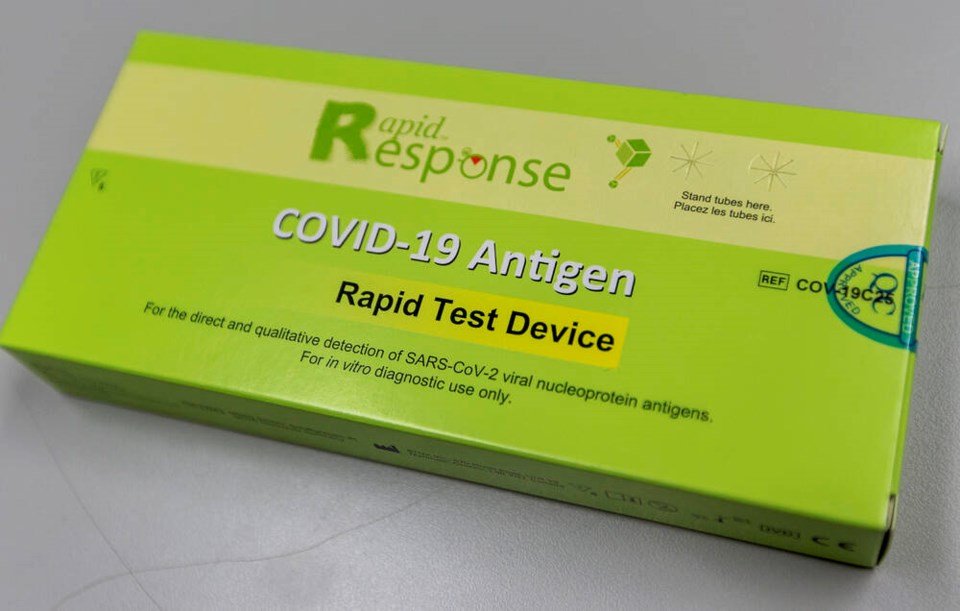British Columbians will make more daily decisions for themselves about dealing with COVID-19 after Friday, when some key public health mandates are lifted.
Provincial health officer Dr. Bonnie Henry announced Tuesday that the legal requirement to produce the B.C. vaccine card will end then, although proprietors of some facilities open to the public will still have the option of requiring them. Also, the vaccine mandate for post-secondary students living in residence will be dropped. Businesses are going to start reverting to routine communicable disease plans from the detailed COVID-19 safety plans that are now required.
On another front, health officials will continue pushing to learn the vaccination status of thousands of health care professionals so patients will know if their practitioners have their shots. That was to have been completed by March 31, but the work is still on-going. The earlier plan to impose a vaccine mandate on those practitioners even if they don’t work directly in the care system remains shelved.
The new phase of the COVID-19 response starting Friday will likely prompt a period of uncertainty similar to when mask mandates were lifted for indoor public spaces on March 11. Many people still wear them and decide whether to do so several times a day, now that the masks are encouraged, but not required.
The measures will change the balance somewhat across the broad spectrum of attitudes about the pandemic.
The horn-honking, traffic-blocking protesters will have less to complain about. But those extremely fearful of COVID-19 and anxious about any exposure will have more to worry about.
Tuesday’s announcements mean B.C. is relying even more than previously on the defence mechanism that’s been most successful to date – vaccines. The high vaccination rate has contributed to B.C.’s impressive statistics compared to elsewhere, even through five successive waves that claimed 3,000 lives.
“We’re in a reasonably good place,” Henry said during what was the last regularly scheduled COVID-19 media briefing.
But even with vaccination rates that top 90 per cent in some age cohorts, the numbers could be higher. Health Minister Adrian Dix said there are almost 70,000 people over age 70 who have not received their booster dose (the 3rd shot). They are among the 1.2 million who are eligible now for their third doses. Less than 60 per cent of the population over 12 has received the third dose.
He urged them all to book appointments.
Also emphasized were plans for a fourth dose for people over 70, Indigenous people over 55, and those clinically vulnerable.
Henry said that with increased travel and a more transmissible variant in play, “we know that we are likely to see a slight increase over time in the next month to two months.”
That is expected to be followed by a gradual decrease in cases, “if we continue to do the things we are doing, in particular, make sure we’re keeping up to date with vaccinations.”
An increase in reported deaths is also expected in coming weeks, but it is due to a change in the process of reporting them. An automated process will first report all new deaths where a positive COVID-19 was noted. That is expected to produce an overcount. When the exact cause of death is determined later, the count will be adjusted on a rolling basis.
Henry said the vaccine card requirement was very effective in encouraging people to get their shots, since they were barred from many gathering spots if they couldn’t produce proof. But the risk level now is much lower than when it was imposed, so the legal requirement will be dropped.
“We do know that many businesses will be looking at their own clientele … some will continue to require that.”
Henry said work on the health care professionals issue is continuing. While everyone in the system is required to be vaccinated, professionals who work outside the medical facilities were not. A plan to impose a mandate on them was shelved last month.
The new plan is to collect their aggregated vaccination information and report it out by the 18 different professions, “so people will have an understanding of the vaccination levels in different professions and can make their own informed decisions.”



